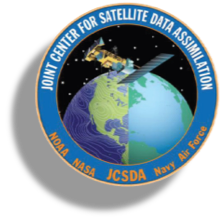Dr. Greg Thompson
Observations Project Scientist
Weather geek/nerd, homebrewer, triathlete, storm chaser and photographer who grew up in "Charm City" (Baltimore, MD) but moved to CO for grad school and loves it here.
Dr. Greg Thompson has joined the JCSDA to bring to bear his cloud physics knowledge to improve satellite data assimilation for improvement of numerical weather prediction models. Greg is working as a member of the observations OBS team to make the best possible usage of existing and new observation resources in the JEDI software.
Greg earned his B.S. in meteorology from Pennsylvania State University in 1990, his M.S. in atmospheric science from Colorado State University in 1993, and his Doctor of Philosophy in Atmospheric Science from the University of Colorado, for his dissertation "Advances in a microphysics parameterization to predict supercooled liquid water and application to aircraft icing" under advisor Katja Friedrich.
Dr. Thompson is internationally recognized for his research on numerical weather modeling, particularly the parameterization of cloud physics and precipitation processes. He developed a bulk microphysical parameterization that compares favorably against other two-moment bulk and more sophisticated spectral microphysics schemes. The latest version of the now aerosol-aware Thompson-Eidhammer microphysics scheme is operationally used in the Rapid Refresh (RAP) and High-Resolution Rapid Refresh (HRRR) models run at the National Center for Environmental Prediction (NCEP). The 2014 paper co-authored with Trude Eidhammer discussing the aerosol-aware microphysics scheme was recognized by RAL with its Publication Award in 2018 and nominated for the UCAR Outstanding Publication Award that same year.
Simultaneous to improving cloud physics parameterizations in weather models, Greg has greatly contributed towards the development of automated aircraft and ground icing forecast applications using model output and explicit prediction of super-cooled liquid water together with various surface, radar, and multispectral satellite data to create icing hazard guidance products that are now routinely generated by NCEP to serve the aviation industry.
In addition, Greg pioneered the automation and delivery of weather data and graphics to the web starting in 1994 with the RAP/RAL Real-Time Weather Data website. The immediate success of this site led to the Aviation Digital Data Service (ADDS) project. Under Greg’s leadership, the ADDS team successfully delivered the first ever NCAR technology transfer of operational systems to the National Weather Service, where it continues to run today. The ADDS team won the UCAR Outstanding Technical Achievement award in 1999, as well as a U.S. Government Technology Achievement award in 2000.
On a lighter note, Greg is not only a weather geek but also well known for his outstanding photography of weather phenomena and for making and drinking homebrew.

